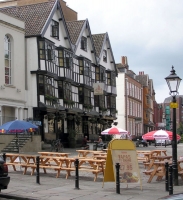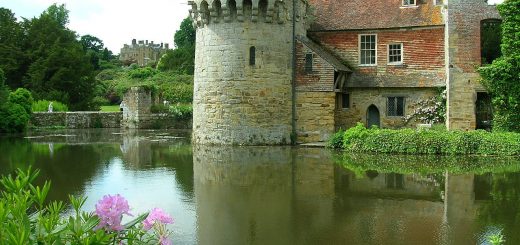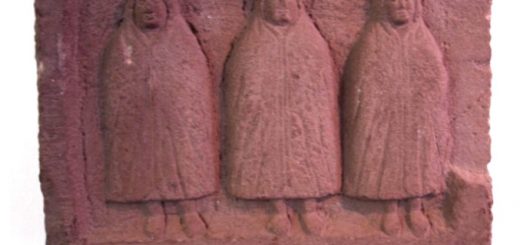Bisham Abbey
The origins of Bisham Abbey began with the Knight Templars, who built a preceptory here in the 12th century. The preceptory became an Augustine Priory and then a Benedictine Abbey in 1537. This did not last for long as the same year saw the dissolution of many Abbeys under Henry VIII, and the destruction of Bisham Abbey was soon to follow. Sir Philip Holby built the current mansion house on the site of the abbey from 1557 to 1561.
![Teddychen81 [CC BY-SA 3.0 (https://creativecommons.org/licenses/by-sa/3.0)], from Wikimedia Commons](http://www.mysteriousbritain.co.uk/wp/wp-content/uploads/2018/12/Bisham_Abbey-300x225.jpg) Ghosts and Legends
Ghosts and Legends
The house is said to be haunted by a sad spectre of a lady forever trying to wash her hands in a basin of water. She has been identified as Dame Elizabeth Holby, wife of Sir Philip. She was a lady in waiting and a personal friend of Queen Elizabeth I. She appears in the East wing of the house constantly wringing her hands (or washing them in a bowl of water) in grief.
The story goes that she had a son called William who was often careless in his schoolwork. Elizabeth, who demanded high standards is said to have either locked him in a cupboard where he starved to death, or to have accidentally beaten him to death.
There is no real evidence for the existence of William although a school book bearing his name is said to have been found by workmen during the 19th century. Her apparition is said to closely resemble her portrait hanging in the hall.
According to another tradition the last Abbot is supposed to have cursed the place and said that no family would succeed the Abbey lands by birth.




Re: Bisham Abbey
This case was written about in The Haunted Homes and Family Traditions of Great Britain by John Ingram (1897)
Bisham Abbey, in Berkshire, was formerly the familv seat of the Hobbys, and about the first half of the sixteenth century was in possession of Sir Thomas Hobby, or Hoby, a man of no slight reputation for learning in those days. He married Elizabeth, the third daughter of Sir Anthony Cooke, who shared the general fame of her family for intellectual qualifications. When Sir Thomas went to France as ambassador for Queen Elizabeth his wife accompanied him, and on his death abroad in 1566 Lady Hoby brought his body home and had it interred in a mortuary chapel at Bisham. Subsequently she married John, Lord Russell.
By her first husband the Lady Hoby is said to have had a son who, when quite young, displayed the most intense antipathy to every kind of study ; and such was his repugnance to writing, that in his fits of obstinacy he would wilfully and deliberately blot his writing-books. This conduct enraged his mother, whose whole family were noted for their scholastic attainments, and who, like her three sisters, Lady Burleigh, Lady Bacon, and Lady Killigrew, was not only an excellent classical scholar, but was also married to a man of literary note, that she chastised the unfortunate lad with all the violence at that period permitted to, and practised by, parents on their children. She beat him, according to the old legend, again and again on the shoulders and head, and at last so severely and unmercifully that he died.
It is commonly reported that, as a punishment for her unnatural cruelty, her spirit is doomed to haunt Bisham Abbey, the house where this cruel act of manslaughter was perpetrated. Several persons have seen the apparition, the likeness of which, both as regards feature and dress, to a pale portrait of her ladyship in antique widow’s weeds still remaining at Bisham, is said to be exact and life-like. She is reported to glide through a certain chamber, in the act of washing blood- stains from her hands, and on some occasions her apparition is said to have been seen in the grounds of the old mansion.
A very remarkable occurrence in connection with this narrative took place some years ago, according to Dr. Lee, author of Glimpses of the Supernatural. " In taking down an old oak window-shutter of the latter part of the sixteenth century," he states that " a packet o antique copy-books of that period were discovered pushed into the wall between the joists of the skirting, and several of these books on which young Hobby s fame was written were covered with blots, thus supporting the ordinary tradition."